False eyelashes are very popular with many women and transgenders. The use of false eyelashes has long been a part of major beauty trends. From the red carpet to YouTube beauty vlogs, there’s something magical and attractive about accentuating the eyelashes.
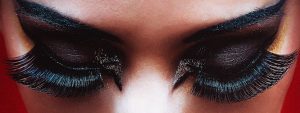
Each year, false eyelashes get bigger and more volumized. This spike in demand evidently shows the lack of mainstream awareness of many long term risks that come with false-eyelash use.
Are Fake Eyelashes Bad For You?
Short answer: It could be. Some advantages of using false eyelashes include instant gratification of having fuller eyelashes. It’s easily obtainable. However, Dr. U highlights the importance of fully understanding how this will affect your eyelashes in the long run.
Major disadvantages of using false eyelashes:
The Loss of Your Real Eyelashes
Regular use of false eyelashes can be convenient. However, frequent and heavy use can lead to some serious eyelash hair loss problems. “Because of the traction,” Dr. U begins to explain, “the weight of the eyelash – the pulling – will affect your original eyelashes.”
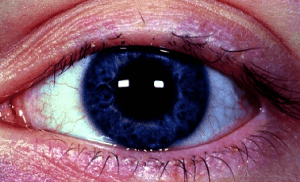
In the long run, your real eyelashes will face some drastic challenges to continue growing. They can thin and disappear over time. Due to this nature, you might find that most will be stuck on a vicious cycle.
The continuous loss of eyelashes will present as eyelash thinning. It can easily be mistaken as a further need to increase the use of false eyelashes.
“You might get to a point where you might not have any of your original eyelashes left to anchor your fake eyelashes,” Dr. U said.
False Eyelashes Tend to Always Look Fake
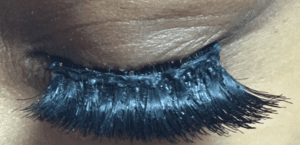
Restricting yourself to false eyelashes means people might commonly suspect that your eyelashes aren’t real. Some might not consider this a problem; society has increasingly welcomed this trend.
However, this option can be frustrating to those that are favoring a “natural look.”
Complications of Skin Allergies and Foreign Materials
First, false eyelashes are often made of artificial materials. Regular use of plastic or acrylic materials on your eyelashes can cause a complication called Contact Dermatitis. Contact Dermatitis is a medical term for a red, itchy rash caused by direct contact with a substance or an allergic reaction to it. Reactions can range from mild to severe such as, “redness, swelling, itch, discharges, or infections as a result,” Dr. U said.
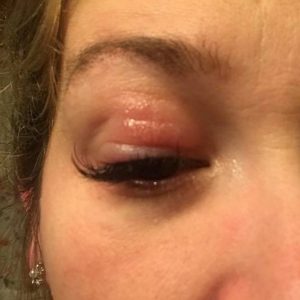
In addition, allergic reactions to gluing material can occur. Eyelash glue is made up of chemicals that are foreign to our bodies, specifically our eyes. The eyes present to be one of the easiest entry points for anything to penetrate our body.
“Even if you’re not allergic to it, these are chemicals that you are putting right on top of your eyelids,” Dr. U explained, “which means this is coming into direct contact with your eye tissue.”
Risk of Serious Infections
Perhaps one of the most untouched topics by many beauty influencers includes the risk of serious infections stemming from the regular use of false eyelashes.
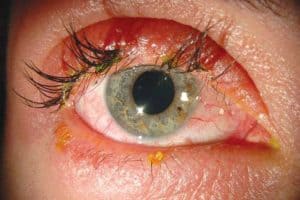
The effort to maintain foreign materials on your eyelids (such as false eyelashes) requires two major risk factors: glue administered in close contact to the eyes and constant handling of your eyes and eyelids.
“Any impurity or dirt, organism, bacteria, and even viruses will have an easy path through your eye into your system,” explained Dr. U.
The probability of infection greatly increases the more you use false eyelashes.
Increased Reports of Eyelash Lice or Mites Habitating In False Eyelashes
Eyelash lice or mites have been reported by many dermatologists across the United States and Australia. Doctors have identified this occurrence to commonly share a habitual and long term use of false eyelashes or eyelash extensions.
Turns out, the long-term use of false eyelashes, or any foreign material, for that matter, isn’t welcomed by our bodies. In fact, these little critters favor mediocre eye hygiene. The less you remember to remove and clean your false eyelashes, the more you’ll find these new pets on your eyelashes. According to a number of healthcare providers, nits may be confused with lash debris.
“Over time, dirt and debris can accumulate,” said Dr. Gary Keoleian from the Michigan Eye Institute told ABC 12. “When it accumulates, that’s when you start getting into irritation. [Lice] can infest, bacteria can take root, then you have irritation and you’re picking at your lashes and it’s a whole cycle.”
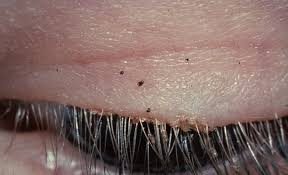
According to Dr. U, it’s all about hair texture. Eyelash hair has the same texture as pubic hair, which is why the same little critter that terrorizes the pubic area – phthirus pubis, pubic or crab lice wreaks havoc on eyelashes, too. The idea, according to Dr. U is that people, particularly women, wear fake eyelashes in an effort to dramatically accentuate their look with longer, fuller and sexier eyelashes. However, Dr. Sairah Malik explained to ABC 7 that the majority of the people who get extensions “are afraid to touch them or wash them because they’re afraid the eyelash will fall out.”
The not touching the eyelashes out of fear of falling out essentially leads to improper eyelash hygiene leads to bacteria buildup and eventually lice. Itching is just the tipping point in the grand scheme of eyelash lice, other symptoms include lid irritation, scabbing, redness, tearing and swelling.
But here’s the thing, the irritation that Dr. Keoleian mentioned, leads to picking at the eyelashes. Dr. U said that the constant pulling of the eyelashes can cause traction alopecia on the eyelash line and stops healthy eyelash growth. No eyelash growth, means balding eyelashes. Due to this odious complication, more doctors feel compelled to advise against the use of false eyelashes. Dr. U has been the most vocal “anti-fake eyelash” healthcare provider. In fact, Dr. U promotes the “go natural” approach when it comes to eyelashes.
Seek Other Alternatives
Some long eyelash seekers have been known to turn to medical treatments, like Latisse, an eyelash treatment that is typically applied on the upper lash line once a day. Some people see results within four to eight weeks, but the most dramatic results appear between 12-16 weeks.
Although it sounds too good to be true, there is a down side – once a person discontinues using Latisse, the eyelashes eventually return to their original state. There have also been some instances in which Latisse has caused permanent changes to eye color and each set of eyelashes is affected differently in length, thickness, fullness, color and direction of growth.
Other alternatives include naturally growing your own eyelashes. With advancements in medical technology and eyelash transplant methods, it is now possible to permanently grow the eyelashes of your dreams.
Revolutionary methods include The VeeLashe™ Eyelash Transplant by Dr. U. This eyelash transplant involves using your own body hair to accentuate your eyelashes naturally.
Read more about why patients prefer this method here: VeeLashe eyelash transplant: There’s More to a Wink Than You Think



